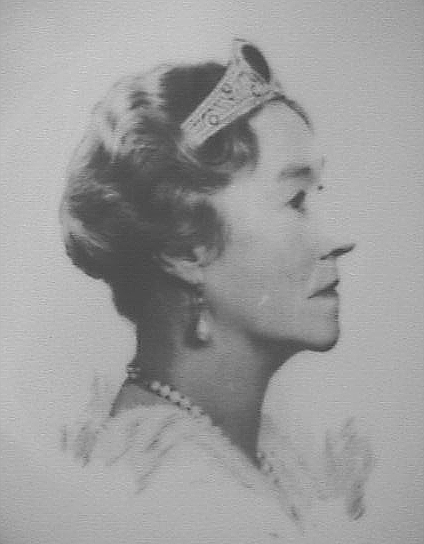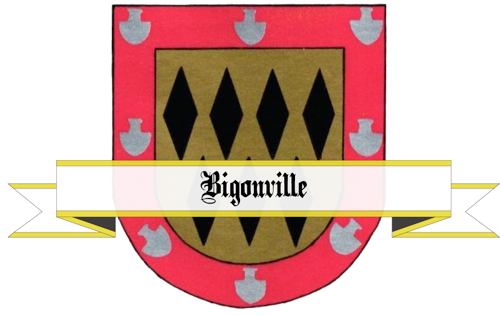Luxembourg in World War II
Luxembourg, a small country between Germany, Belgium and France, was occupied by German troops on 10th of May 1940 and the country was annexed by the Reich. A German government was set up, Gauleiter Gustav Simon as the major authority. All opposition against the Germans was immediately persecuted.
French names and surnames had to be changed into German names, military service in the Wehrmacht was ordered for all Luxembourg young men. All members of resistance movements of any kind were taken to martial courts, judgment leading to sentence of death. Many others were taken to concentration camps. Members of their families were resettled to the east.
The German government and the NAZI Party established a total control. Luxembourg was officially not existing any longer.
From England, the Grand Duchess and the Luxembourg government supported the resistance against the aggressors and prepared the liberation.

Newspaper clips
Luxemburger Wort - 24. September 1941
Brief von der belgischen Grenze - […] Für alle politischen Leiter der Ortsgruppe Perl der VDB wird nun jeden Sonntag auf dem Schießstand des Zollgrenzschutzes in Bondorf ein Pflichtschießen durchgeführt, dessen Leitung Herr Zollsekretär Deinzer aus Bondorf übernommen hat. Mitglieder der Ortsgruppe, die sich ebenfalls beteiligen wollen, mögen sich beim Schulungsleiter oder den Zellenleitern melden.
Luxemburger Wort - 6. November 1941
Schwarzschlachtung - Den Bauschleider Zöllnern ist es gelungen, zwei Schwarzschlachtungen von Schweinen aufzudecken. Die protokollierten Einwohner stammen aus der Umgegend von Bondorf.
Luxemburger Wort - 25. Juli 1942
Mitarbeiterbesprechung der VdB Perl - Die Ortsgruppenleitung Perl der VdB, umfassend die Orte Perl, Wolflingen, Obermartelingen, Rombach, Bondorf, Holtz und Arsdorf ladet für Sonntag, den 28. Juli, um 14 Uhr, im neun Schulhaus zu Perl zu einer Mitarbeiterbesprechung ein. Alle Mitarbeiter der Ortsgruppenleitung wollen restlos und pünktlich erscheinen, da die Tagesordnung einige wichtige Punkte vorsieht.
Luxemburger Wort - 27. Juli 1942
Verschärfte Maßnahmen - Der Amtsbürgermeister von Redingen hat für alle der Amtsbürgermeisterei Redingen zugehörige Orte des westlichen Grenzgebietes verschärfte Maßnahmen für die Nichtteilnahme an der Suche nach dem Kartoffelkäfer angeordnet, die ohne Ausnahme durchgeführt werden. Die Kolonnenführer in den einzelnen Orten sind angewiesen, unnachsichtlich alle Familien zur Anzeige zu bringen, von denen sich niemand an der wöchentlichen Suche beteiligt. Sowohl im Interesse der Volksernährung wie im Interesse eines jeden Einzelnen liegt es, sich an der Bekämpfung dieses Schädlings zu beteiligen, was bisher von der gesamten Bevölkerung viel zu leicht genommen wurde.
Luxemburger Wort - 16. September 1942
Aenderung in der Ortsgruppe Perl - Um Irrtümer zu vermeiden, wird darauf aufmerksam gemacht, daß, nachdem die neue Ortsgruppe Rambruch der VDB gegründet ist, zur Ortsgruppe Perl nunmehr nur noch die Orte: Perl, Holtz, Bondorf, Wolflingen, Ober-Martelingen und Rombach gehören. Die gleiche Einteilung hat auch für die NSV, DAF und NS-Frauenschaft (Deutsches Frauenwerk) Gültigkeit.
Luxemburger Wort - 6. Oktober 1942
Kameradschaftsabende der Zöllner in Bondorf - Die Männer vom Zollgrenzschutz des Zollkommissariats Rambruch waren an zwei Abenden im Hotel Molitor zu Bondorf zu einem kameradschaftlichen Treffen zusammengekommen. In harmonischer Weise verbrachten sie hier einige frohe Stunden, die für sie eine willkommene Abwechslung in ihrem verantwortungsvollen Dienst waren. Unter anderem wurden auch mehrere interessante Lehr-, Sport- und Kriegsfilme gezeigt. Am zweiten Abend sprach der z. Zt. in Urlaub weilende Leutnant Lenzer, früher Zollinspektor am Kommissariat Bauschleiden und Rambruch, in überaus spannender Weise von den erlebnisreichen und schweren Kämpfen im …
Escher Tageblatt - 31. Oktober 1942
Amtliches - […] BEKANNTMACHUNG betr. Hühnerablieferung. Vom 30. Oktober 1942. Das Landesernährungsamt gibt bekannt: 1) Für die Durchführung der durch Anordnung vom 28. September 1942 verfügten Pflichtablieferung von Geflügel von 1 Stück für sämtliche Hühnerhalter von ̃ 1–10 Stück Geflügel 2 Stück für sämtliche Hühnerhalter bis 20 Stück Geflügel; 3 Stück für sämtliche Hühnerhalter bis 30 Stück Geflügel; 4 Stück für sämtliche Hühnerhalter über 30 Stück Geflügel, werden für die Erzeuger der einzelnen Sammelstellen die in der Anlage angegebenen Ablieferungstage festgesetzt. 2) Das Geflügel ist am Vorabend des Ablieferungstages sachgemäß und sauber zu schlachten und darf unter keinen Umständen abgebrüht werden. Der Rumpf ist aufzuschneiden und die Eingeweide sind sauber zu entfernen. 3) Die Sammelstellen haben alles Geflügel zu verweigern, das a) nicht fristgemäß abgeliefert wird, b) nicht sauber und sachgemäß geschlachtet ist und c) dem festgesetzten Mindestgewicht nicht entspricht. 4) Die Bezahlung des Geflügels erfolgt über die Eiersammelstellen an einem noch bekanntzugebenden Zeitpunkt, gegen Vorlage der dem Erzeuger bei der Ablieferung ausgehändigten Empfangsbescheinigung.
uaernandlungen werden auf Grund der Anordnung über die Einführung der Verbrauchsregelungstrafverordnung vom 8. 4. 42 (VB1. f. Lux. S. 136) bestraft. Der Chef der Zivilverwaltung in Luxemburg Im Auftrage: Dr. Broic her. […]
Luxemburger Wort - 27. Februar 1943
Das Oesling meldet [...]
Aus dem Wolflinger Anschlagkasten - Bis spätestens 1. März 1943 müssen alle Taubenhalter beim Amtsbürgermeister in Redingen als Ortspolizeibehörde eine entsprechende Erlaubnis eingeholt haben. — Auf Grund einer Bekanntmachung des Amtsbürgermeisters Redingen sind die Pferdehalter verpflichtet, alle Veränderungen in ihrem Pferdebestand sofort auf dem Amt in Redingen zu melden. — Am 3. März muß in jeder schweine- und hühnerhaltenden Haushaltung jemand zur Erteilung der Auskünfte zwecks Bestandsaufnahme anwesend sein. Ist dies nicht der Fall, muß sofort am nächsten Tag beim Bürgermeister Meldung gemacht werden. [...]
Luxemburger Wort - 19. März 1943
Der Grenzbote berichtet
Allerlei aus Perl - Die Gaufilmstelle kommt am Samstag, dem 20. März, nach Perl und gibt im Saale von Roder eines ihrer beliebten Gastspiele mit der Aufführung des Operettenfilmes "Wiener Blut". Neben dem Hauptfilm läuft noch die Wochenschau und ein Kulturfilm. Für Jugendliche über 14 Jahre ist der Zutritt erlaubt. [...] — Der Amtsbürgermeister als Ortspolizeibehörde hat angeordnet, daß das Abbrennen von Grasflächen, Entzünden von Feuer in unmittelbarer Nähe von Waldungen und das Rauchen im Walde während der Frühjahrs- und Sommermonate unter strengster Bestrafung verboten ist. Auf die diesbezügliche Bekanntmachung an den Anschlagstafeln wird hiermit aufmerksam gemacht. — Es besteht Veranlassung darauf hinzuweisen, daß alle Hausschlachtungen vor deren Vornahme beim Amtsbürgermeister zu Redingen angemeldet werden müssen. Nähere Richtlinien sind aus der Bekanntmachung an den Anschlagstafeln zu ersehen. [...]
Deutsche Filme in Martelingen - Im Kino zu Martelingen, das weit und breit das einzige in diesem Gebiet ist, seit einiger Zeit alle 14 Tage deutsche Filme aufgeführt. Alle zweite Woche wird ein vollkommen deutsches Programm geboten, das sich großer Beliebtheit erfreut, wie die Menge der Besucher sowohl von diesseits wie jenseits der Grenze immer wieder beweisen. Den Filmliebhabern aus dem Grenzgebiet wird empfohlen, zum Besuch der deutschen Vorstellungen jeweils die Vorstellungen am Sonntagnachmittag zu besuchen, da ab 20 Uhr der Grenzverkehr gesperrt ist. Am kommenden Sonntag läuft als Hauptfilm neben der Wochenschau und einem Kulturfilm der lustige Ufa-Film "Hochzeitsreise zu Dritt".
Luxemburger Wort - 13. April 1943
Die zweite Veranstaltung des Kulturringes Perl - Als zweite Veranstaltung des Kulturringes der NSDAP, Ortsgruppe Perl, wird am Donnerstag abend im Saale des Gasthauses Roder zu Perl ein heiterer Wilhelm-Busch-Abend stattfinden. Die Veranstaltung wird um 20 Uhr beginnen. Unter anderem werden auch heitere Schattenspiele und lustige Filme gezeigt. Zu dem Abend ergeht an alle, besonders aber an die junge Generation, von Perl, Holz, Bondorf, Wolflingen, Obermartelingen und Rombach herzliche Einladung. Der Eintritt ist frei.
Luxemburger Wort - 16. September 1943
Oeffentliche Versammlung in Bondorf - Am Samstag, den 18. Sept., findet um 20.30 Uhr eine öffentliche Versammlung der NSDAP statt. Es wird der Reichsredner Dr. Jager sprechen. Die gesamte Bevölkerung ist eingeladen.
Escher Tageblatt - 9. November 1943
[...] Verschiedenes. Die Ortsgruppe Perl der NSDAP führt am 20. November eine öffentliche Versammlung für den gesamten Ortsgruppenbereich durch, wobei Dr. Jager sprechen wird. Die Versammlung findet zu Perl im Saal der VdB abends um 20 Uhr statt. Am 23. November findet in Bondorf in der alten Schule ein Zellenabend statt. Durch die Gaufilmstelle gelangt im Saale Roder zu Perl am 25. November um 20 Uhr der Film "Altes Herz wird wieder jung" nebst der neuesten Wochenschau zur Aufführung. Der Bevölkerung wird zur Kenntnis gebracht, daß das Arbeitsamt zu Redingen nicht mehr Montags für den öffentlichen Verkehr geöffnet ist, sondern jeden Mittwoch und zwar von 14 bis 16 Uhr. Der Amtsbürgermeister als oberste Polizeibehörde weist mit Nachdruck darauf hin, daß in nächster Zeit scharfe Kontrollen der Luftschutzbereitschaft durchgeführt werden, da wiederholt festgestellt worden ist, daß die Bevölkerung aller zur Amtsbürgermeisterei Redingen gehörenden Ortschaften hinsichtlich der Verdunkelung die erforderliche Sorgfalt vermissen läßt. Auf die ausführliche Bekanntmachung des Amtsbürgermeisters bezüglich der Hausschlachtungen für das Winterhalbjahr 1943/44 wird besonders hingewiesen. Danach beträgt die Fleischmenge für jede zur Selbstversorgung zugelassene erwachsene Person 40 kg, für Kinder unter 6 Jahren 20 kg Schlachtgewicht für die Dauer von 52 Wochen. Dabei werden aber die im vergangenen Schlachtjahr zuviel geschlachtete Mengen von den vorgesehenen Rationen in Abzug gebracht […]
Escher Tageblatt - 25. November 1943
Amtliches - 5. BEKANNTMACHUNG betr.: Ankauf von mastfähigem Großvieh. Vom 24. November 1943. In Ergänzung der 4. Bekanntmachung betr. Ankauf von mastfähigem Großvieh vom 15. 11. 43 gibt das Landesernährungsamt bekannt: Das dem Landesernährungsamt Abtlg. Viehbewirtschaftung aus nachstehenden Ortschaften zur Ablieferung angemeldete mastfähige Magervieh ist vom Besitzer an den nachstehenden Tagen und zu den festgelegten Stunden an die jeweiligen Sammelstellen anzuliefern. 1 Die Termine sind wegen den von der Reichsbahn festgesetzten Verladefristen genauestens einzuhalten. Die Tiere sind in nüchternem Zustande aufzutreiben, andernfalls Abzüge für Ueberfütterung gemacht werden. Die Bezahlung erfolgt an Ort und Stelle, vom Bruttoerlös werden Auftriebsgeld, Verwiegegeld, Transportversicherung und 0,5 v. H. für allgemeine Unkosten in Abrechnung gebracht. - Auftriebsorte und Auftriebszeiten […] Donnerstag, den 2. 12. 43: Nördingen, Bahnhof, 13 Uhr: Für die Erzeuger der Ortschaften: Arsdorf, Bondorf, Escheid, Elvingen, Folscheid, Hobscheid, Hüttingen, Kleinelcherodt, Lannen, Niederpallen, Nördingen, Nagem, Oberkolpach, Rodt, Perl, Rambruch, Ospern, Redingen, Schweich, Wolwelingen. […] Die Erzeuger haben Stricke zum Anbinden der Tiere mitzubringen und haben bei der Verwiegung und bei der Verladung der Tiere behilflich zu sein. Der Chef der Zivilverwaltung in Luxemburg Im Auftrage: Dr. Broicher.
On 10th of September 1944, American troops liberated Luxembourg. The 28th Infantry Division entered the Bigonville sector from Martelange, Belgium.
Luxembourg was in the center of one of the greatest battles of World War Two, the Battle of the Bulge. On December 16, 1944, the Germany launched its last great counter-offensive through the Ardennes Mountains. On December 21th, the Germans surrounded the U.S. 101st Airborne Division in the town of Bastogne. The Americans refused to surrender, and were finally rescued on December 26th by the Third Army of General George Patton.
General Patton and 5,100 U.S. soldiers are buried at the U.S. Military Cemetery at Hamm, five kilometers from Luxembourg City, in the direction of Sandweiler. The Luxembourg American Cemetery is administered by the American Battle Monuments Commission. Near Sandweiler is the location of the German Military Cemetery. It is administered by the Volksbund Deutsche Kriegsgräberfürsorge e.V..
